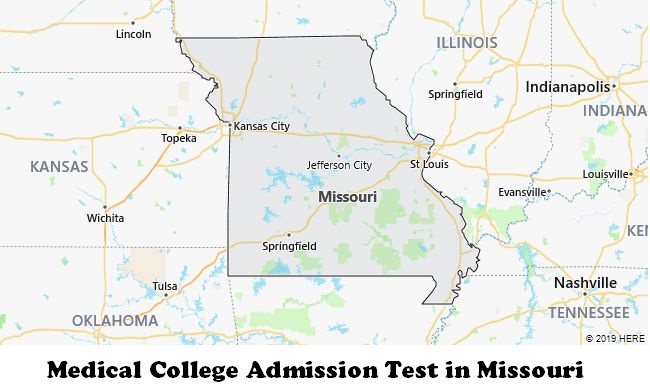According to AAMC (the MCAT test maker), there are 7 MCAT test centers in Missouri. Most testing centers are located inside a college or university. You can select a testing location that is nearest to you. Please note that you are able to choose a test center when registering for the MCAT.

ETS- UNIVERSITY OF MISSOURI
406 S.6TH STREET
UNIV OF MISSOURI – COLUMBIA PARKER HALL
GROUND LEVEL(GARDEN LEVEL)
COLUMBIA, MO 65201
Columbia – Jefferson City
520 Ellis Blvd
Suite 0 Ground Level
JEFFERSON CITY, MO 65101
Kansas City – University of Missouri
University of Missouri – Kansas City
4825 Troost Ave. Rm 206
Kansas City, MO 64110
ETS – TRUMAN STATE UNIVERSITY
Truman State Univ.
Violette Hall – Rm.1132
301 E. Patterson St
Kirksville, MO 63501
Kansas City – Lees Summit
1201 NE RICE RD
LEES SUMMIT, MO 64086
Springfield – East Independence Street
1830 East Independence St.
Springfield, MO 65804
St. Louis – Craig Road
1001 Craig Road
Suite 181
St. Louis, MO 63146

Arch “Gateway to the West”
Arch “Gateway to the West” (Gateway Arch) – the most famous symbol of St. Louis and one of the most recognizable landmarks in the United States.
The height of the arch, as well as the distance between its supports, is 630 feet (192 meters); in cross section, it has the shape of an equilateral triangle with a side of 54 feet (16 meters) at ground level and 17 feet (5.2 meters) at the top. The shape of the arch corresponds to the so-called “chain line”, which is precisely described by trigonometric formulas and ensures an even distribution of the load.
The arch structure is made of 3/8″ (approx. 10 mm) thick carbon steel sheathed in 1/4″ (approx. 6.5 mm) stainless steel. The distance between the inner and outer steel “layers” is about 3 feet (0.9 meters) at the base and 7.75 inches (about 20 cm) at the top. Approximately to the middle of the height of the arch (up to a mark of 300 feet), additional reinforced concrete is poured between the layers of steel, above they are connected only by stiffeners. The arch rests on two concrete foundations that are 60 feet (about 18 meters) deep.
In the upper part inside the arch there is an observation deck, which can be reached by two “trams” – funiculars. In the dark, the arch can be illuminated with a system of spotlights.
Since the construction of the arch, as well as the Museum of Western Development below it (the numerous exhibits of which tell both the history of the great American expansion and the construction of the majestic monument itself) and the “Old Courthouse” built back in 1864, formed the “Jefferson and exploration of the West”. In 2018, the memorial was transformed into the newly created Gateway to the West Arch National Park.
In 1933, a well-known lawyer and public figure in St. Louis, Luther Smith, proposed to create a memorial in the city dedicated to the third President of the United States, Thomas Jefferson. Smith argued that it was the “Fourth City” that was the best place to perpetuate the memory of one of the most famous American politicians, since St. Louis was directly connected with Jefferson’s most important achievement – the Louisiana Purchase. At the same time, the creation of such a memorial would significantly improve the status of the city as one of the historical centers of the United States of America.
Smith’s idea was supported by the mayor of St. Louis and later by Missouri ‘s representatives in the United States Congress. In June 1934, American legislators decided to establish a commission whose task was to select a site and consider projects for a future memorial. On December 21, 1935, US President Franklin Roosevelt signed an Executive Order establishing the Jefferson National Memorial and Western Settlement and providing federal funding through New Deal public works agencies.
A densely developed piece of land along the Mississippi River was chosen for the construction of the St. Louis memorial, prompting numerous protests and litigation. Nevertheless, over the next four years, the National Park Service bought the buildings to be demolished, work on clearing the territory of the future memorial complex began on October 10, 1939 and was completed three years later.
After the end of World War II, work on the creation of the memorial continued. In 1947, a competition was announced for the development of the project, for which 172 proposals were submitted. The jury selected the five best participants, who proceeded to a more detailed, refined study of their options. Finally, on February 18, 1948, a winner was chosen: a team led by the architect Eero Saarinen. Saarinen’s design for the huge arch was also approved by a government commission and the US National Park Service.
